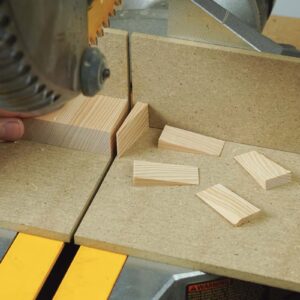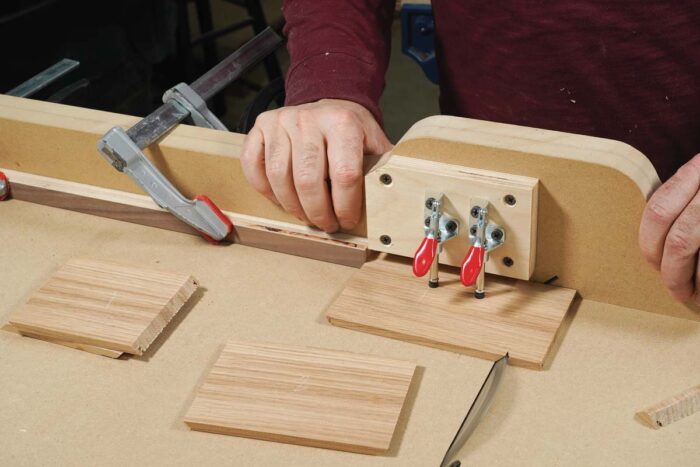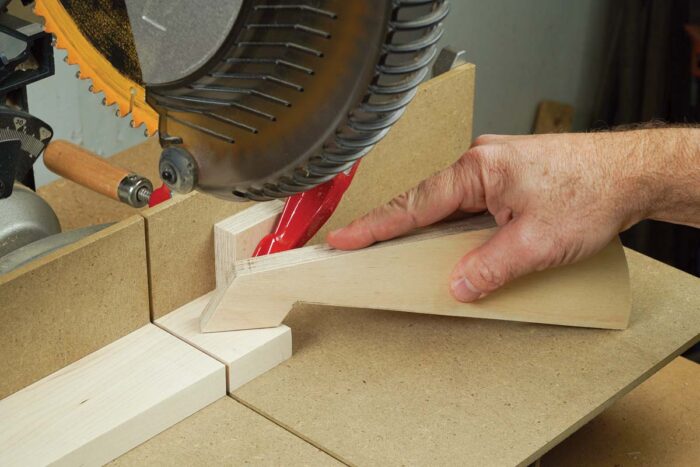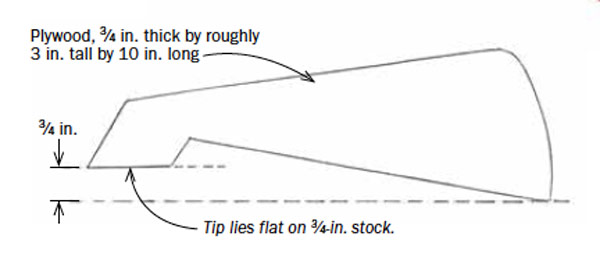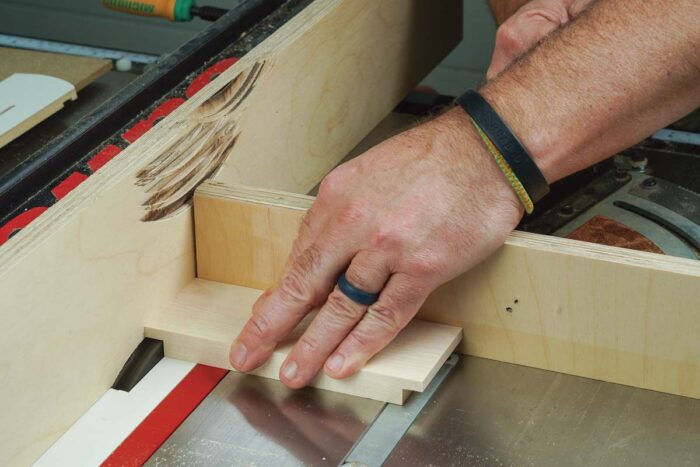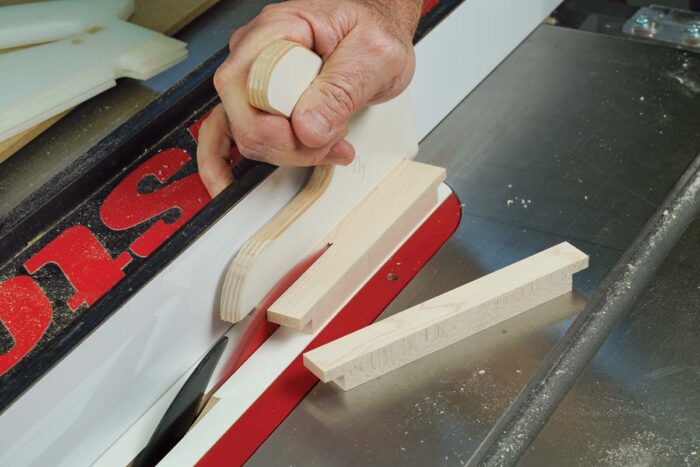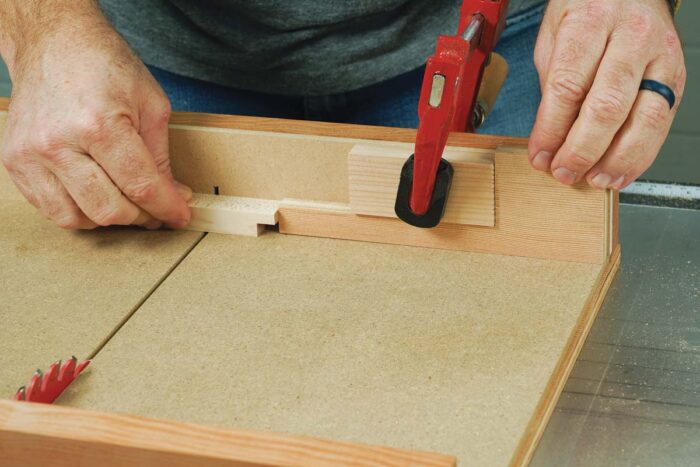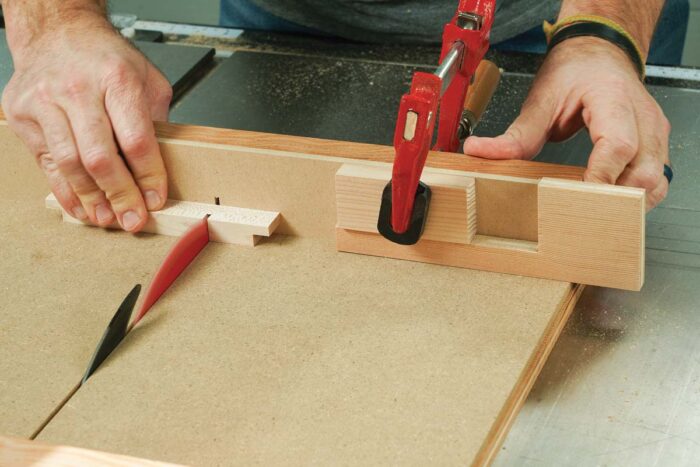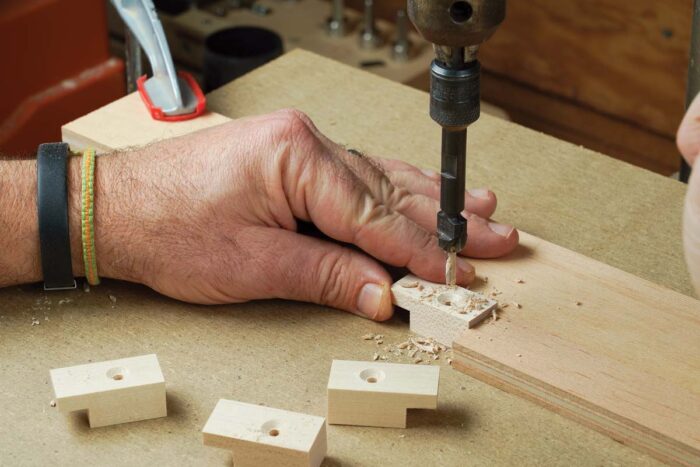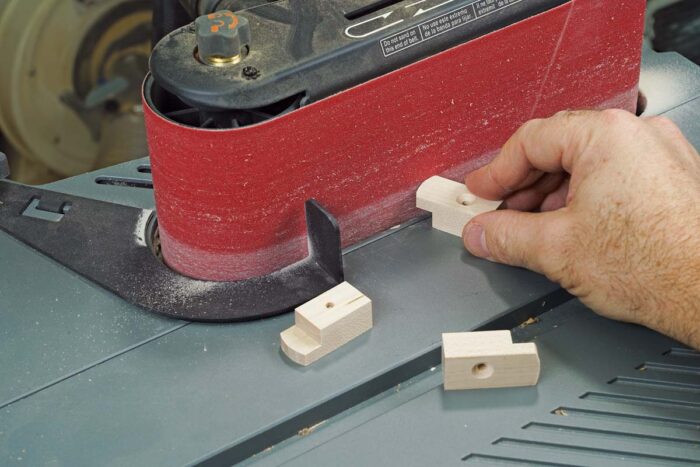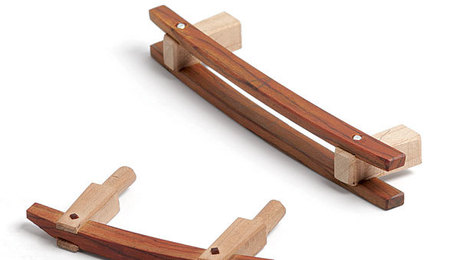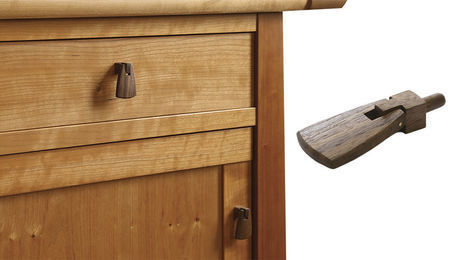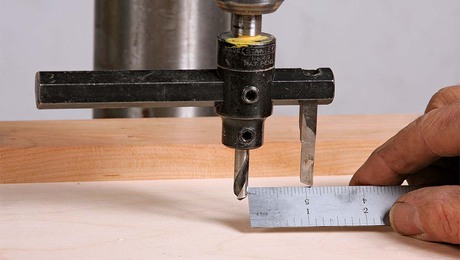
[ad_1]
The information on this article sprang from a remark despatched in to Nice Woodworking’s Store Speak Stay podcast. “Yesterday I used to be chopping some shims on my bandsaw,” the listener wrote. “The piece I used to be chopping them from was fairly small, however I believed to myself, ‘I can get one other one out of this.’ When my finger was about an inch from the blade, the shim and the offcut acquired dragged into the throat. There was a loud bang, and I jerked again. It damage lots. After a second to gather myself, I opened my fist to search out my finger intact. The ache got here from the wooden exploding and hitting it. I fell asleep final evening thanking God for the superb blessing of my palms.”
From handles and pulls to toes, wedges, wheels, drawer stops, and table-attachment tabs, woodworkers manufacture a good quantity of small elements. Rather a lot can go improper after we do.
Whereas these little elements could be difficult to deal with with each hand instruments and energy instruments, hand instruments are normally safer, so all the time contemplate these as a substitute for energy. That stated, it’s simpler to attain pace and precision with machines. And that’s the place small workpieces are their most harmful.
The excellent news is that the options are easy and easy. And, as is so usually the case in woodworking, protected strategies additionally yield higher outcomes, so greatest practices are a win-win.
The primary resolution: Shut the throat
The primary pitfall in chopping small elements is the one our podcast listener fell into—a gap across the blade that enables a small workpiece or offcut to be pulled into it, damaging it and presumably pulling your fingers with it. Desk saws, miter saws, and bandsaws include massive blade slots that accommodate blades of assorted thicknesses, set at varied angles. Many woodworkers discover a technique to tackle this downside on their desk saws, understanding {that a} zero-clearance throat plate will forestall chipping on the underside fringe of all kinds of cuts. However we have a tendency to not tackle the difficulty on miter saws and bandsaws, partly as a result of zero-clearance is tougher to take care of on these machines, and since it isn’t all the time vital.
On all three machines, a panel or two of 1⁄4-in.-thick MDF is all it’s worthwhile to create zero clearance across the bit or blade. These tight blade gaps is not going to solely guarantee clear cuts and maintain small items from diving dangerously into a spot, however they can even present you precisely the place the blade will reduce, so you’ll be able to align a format line with the slot, or hook a tape measure on it when organising a cease.
-Desk noticed sled
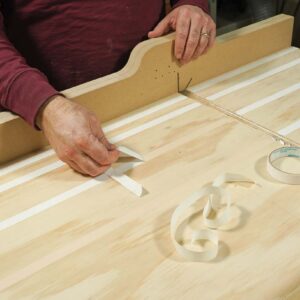 |
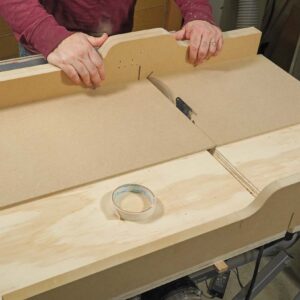 |
Begin along with your table-saw sled. Set the blade to the miter angle you need, and use double-stick tape to connect a big piece of 1⁄4-in. MDF. Do the identical to the fence if wanted. Then reduce by way of the MDF (proper) to create zero-clearance assist across the blade.
-Miter noticed
-Bandsaw
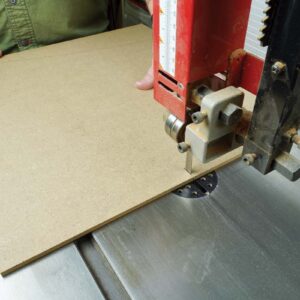 |
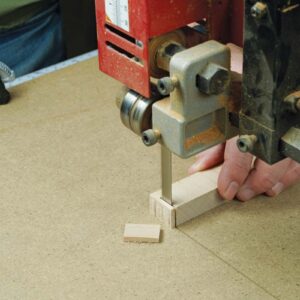 |
Zero clearance on the bandsaw. Minimize partway into a bit of 1⁄4-in. MDF, then clamp it in place to create assist across the blade.
Wait to show an extended piece right into a small one
The second resolution is among the common ideas of protected, efficient woodworking. Contemplate the usual milling course of. The rationale we joint, aircraft, and rip elements to thickness and width first—earlier than chopping them to size—is that longer items are safer and simpler to deal with on the jointer, planer, and desk noticed.
The identical goes for small workpieces. The thought right here is to do all the things you’ll be able to to a small half (or elements)—together with milling, shaping, drilling, and so on.—whereas it’s nonetheless half of a bigger piece. This can make a world of distinction in terms of security and management, and it’s normally a extra environment friendly technique to work.
You’ll be stunned in any respect the issues you are able to do to a small workpiece earlier than chopping it free from a bigger one.
 |
 |
Similar precept as the traditional milling course of. Milling quick elements on a jointer or planer can vary from tough to unsafe. That’s why woodworkers mill elements to thickness and width (above left) earlier than chopping them to size (above proper).
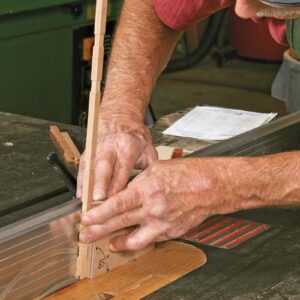 |
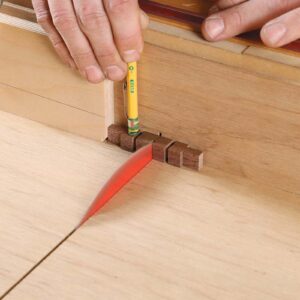 |
Lengthy elements are safer than quick ones. In his Grasp Class on furnishings pulls (FWW #245), Ross Day reduce dadoes and slots in an extended workpiece, which grew to become a sequence of small posts (above left and proper).
Add a provider. To chop 60° angles on the ends of Festool Domino tenons, so they might type a threeway joint, FWW contributor Phil Gruppuso inserted the tenons in an extended scrap (beneath). Small workpieces can be glued to bigger scraps for protected chopping or shaping, then reduce off afterward.
Slicing, shaping, and drilling small workpieces safely
For very small workpieces, like little mitered moldings, small pins, miter keys, and so forth, my favourite cutoff software is a Japanese handsaw. However after I want much more precision, or a bunch of elements reduce to the identical actual size, I flip to the desk noticed or miter noticed, including a cease of some type. It’s crucial to regulate the piece that’s trapped between the blade and the cease. There are a selection of efficient methods to regulate small cutoffs, as proven within the pictures.
Pivoting Maintain-DownDo that useful hold-down. This intelligent helper from FWW contributing editor Michael Fortune controls small elements safely. In contrast to toggle clamps, it requires no setup. That is the final form of the hold-down. Christiana angles the tip to return down flat on 3⁄4-in. workpieces, however it is going to maintain down thicker and thinner inventory too. |
Though there’s a whole lot of drilling and shaping you are able to do to small elements earlier than chopping them off an extended piece, there can be occasions you’ll have to attend till the half is small and unwieldy. Typically it’s best to carry a small half in a bench vise, permitting you to work on it with a hand software or sanding block.
Most of the time, nevertheless, to complete shaping small elements, I flip to my benchtop sanding unit, which has a belt and a drum. It’s a great possibility for small elements as a result of the almost certainly accident is a pores and skin abrasion, which is fairly straightforward to keep away from. When sanding small elements on a disk, belt, or drum, maintain the piece on the desk if you happen to can. Use a agency grip and a light-weight contact.
Drilling small elements is much less harmful than shaping them usually. I normally do that on the drill press. All you’ll want usually is a fence and a cease, along with your fingers holding the half in place. But when the drill bit is massive, or the half needs to tug upward in a powerful means, I safe it within the jaws of a giant hand-screw clamp.
There are many methods to work small elements safely. These are a few of the best and greatest I do know.
Asa Christiana is FWW’s editor-at-large.
Join eletters as we speak and get the newest strategies and how-to from Nice Woodworking, plus particular affords.
Obtain FREE PDF
once you enter your electronic mail tackle beneath.
[ad_2]


